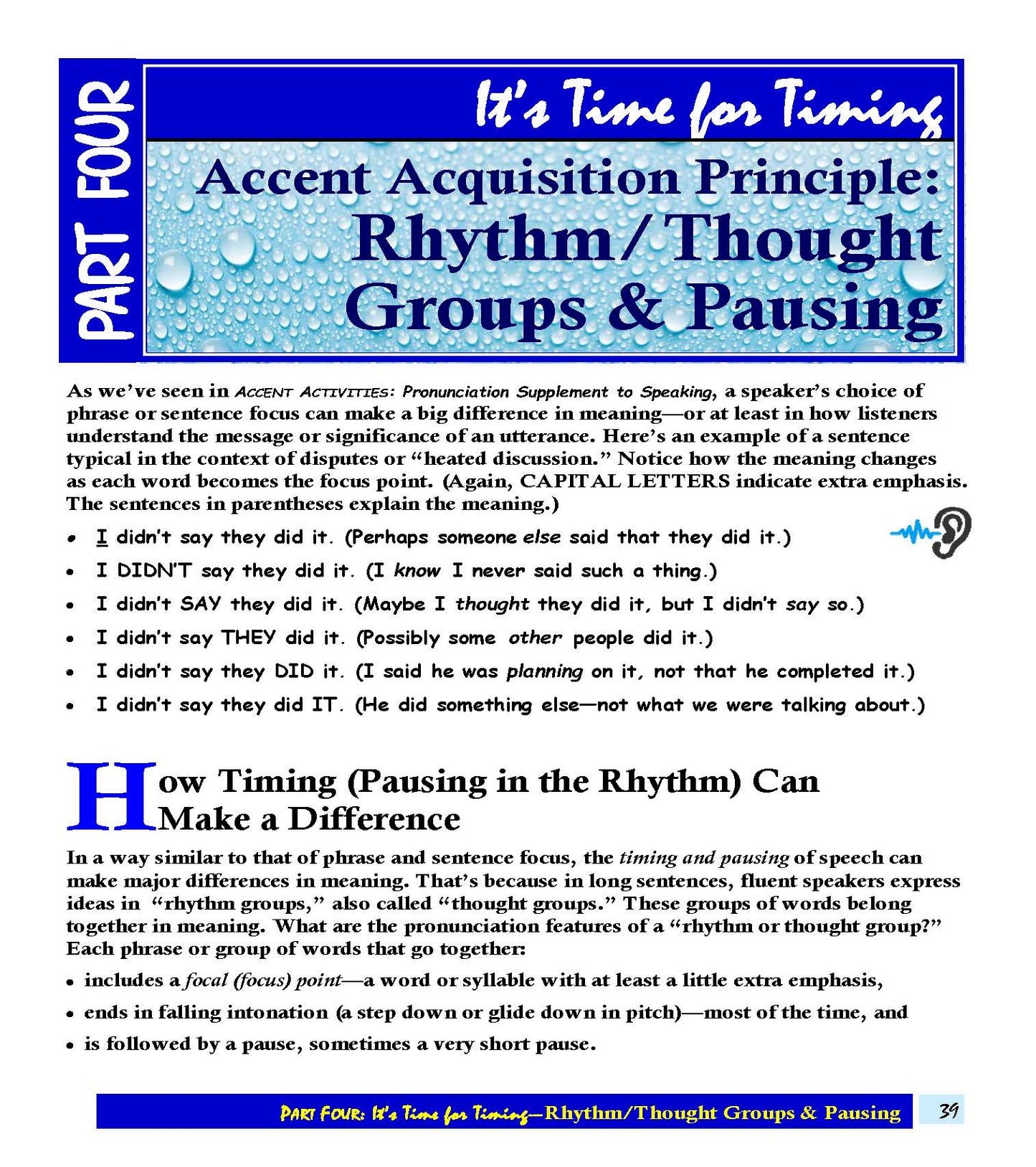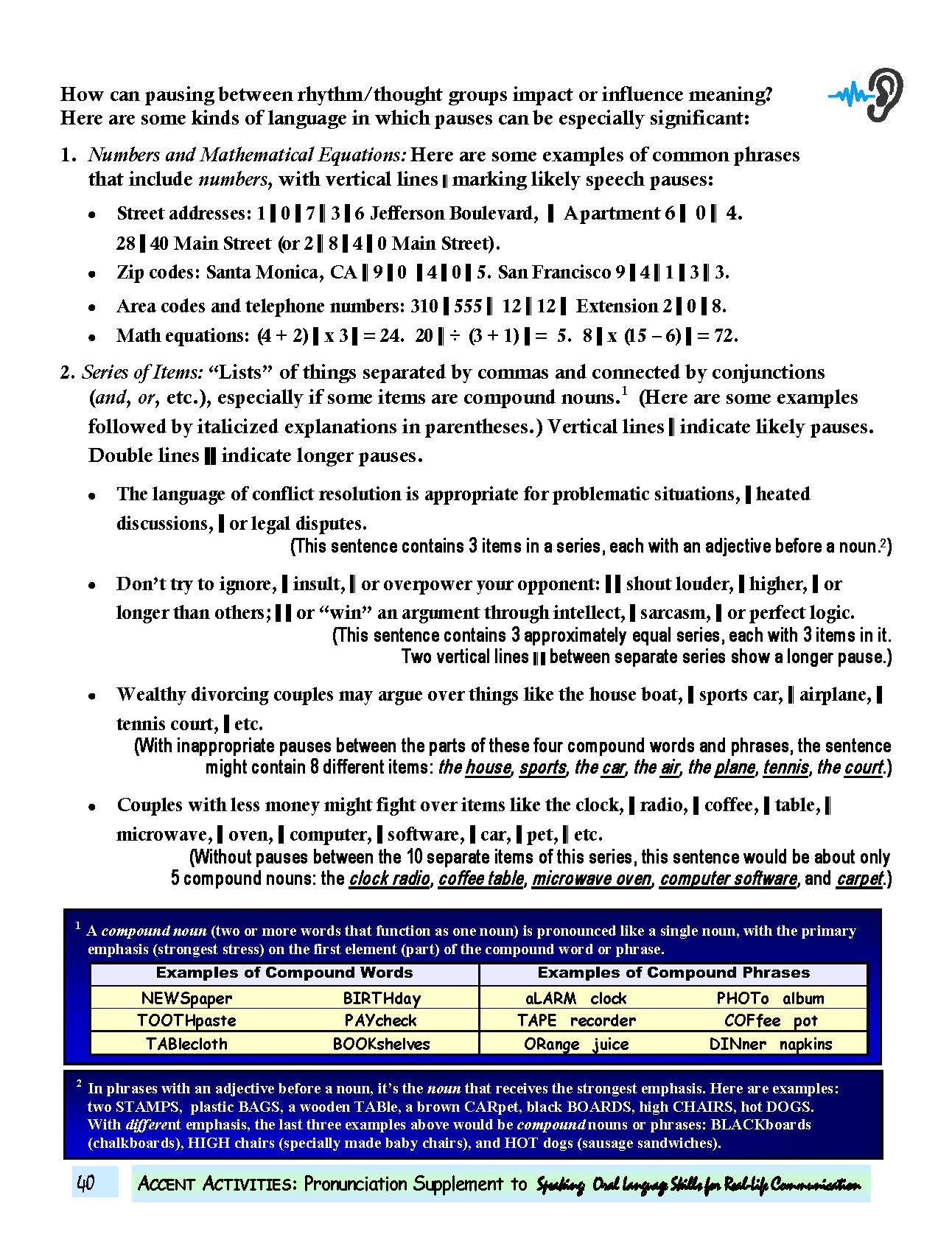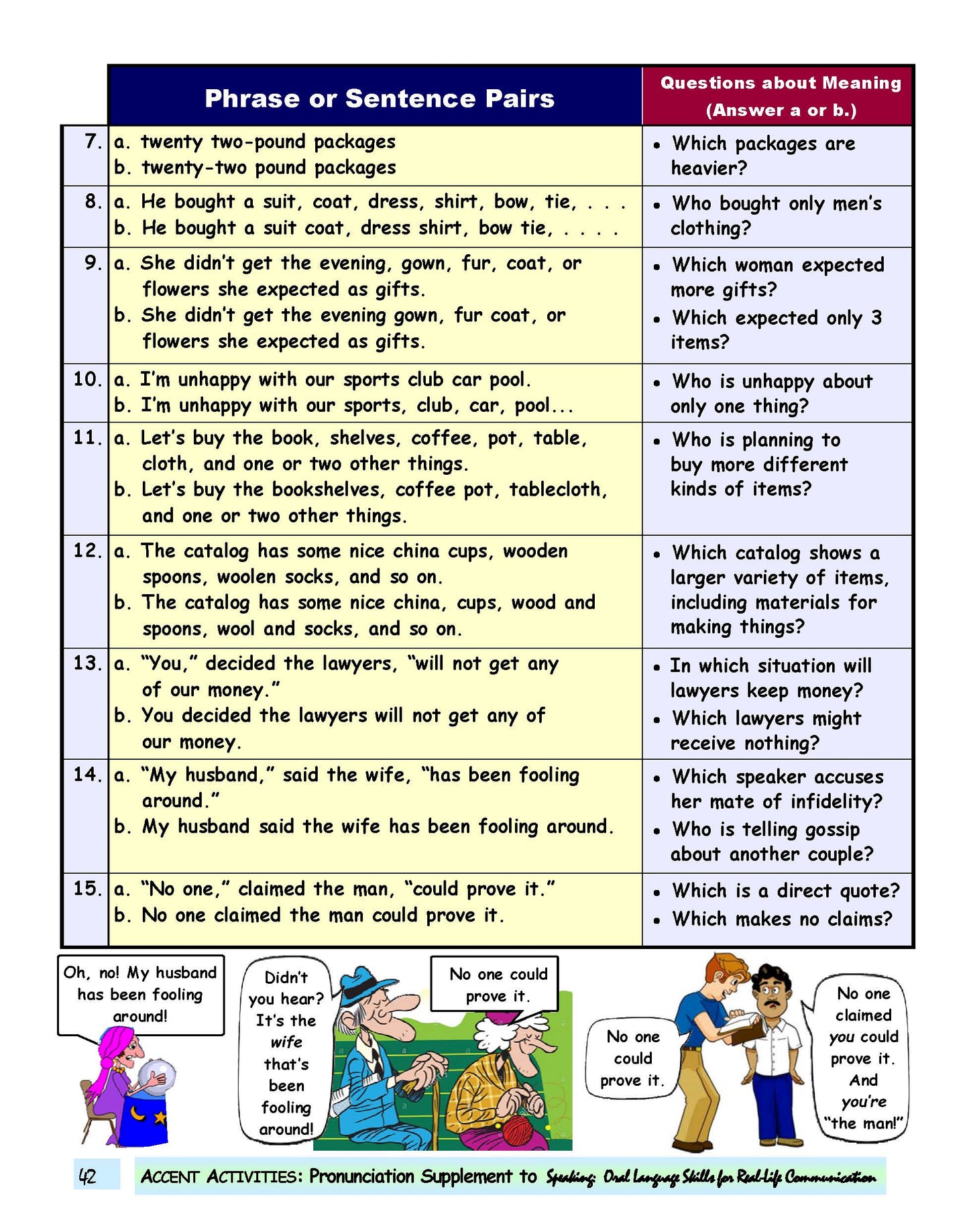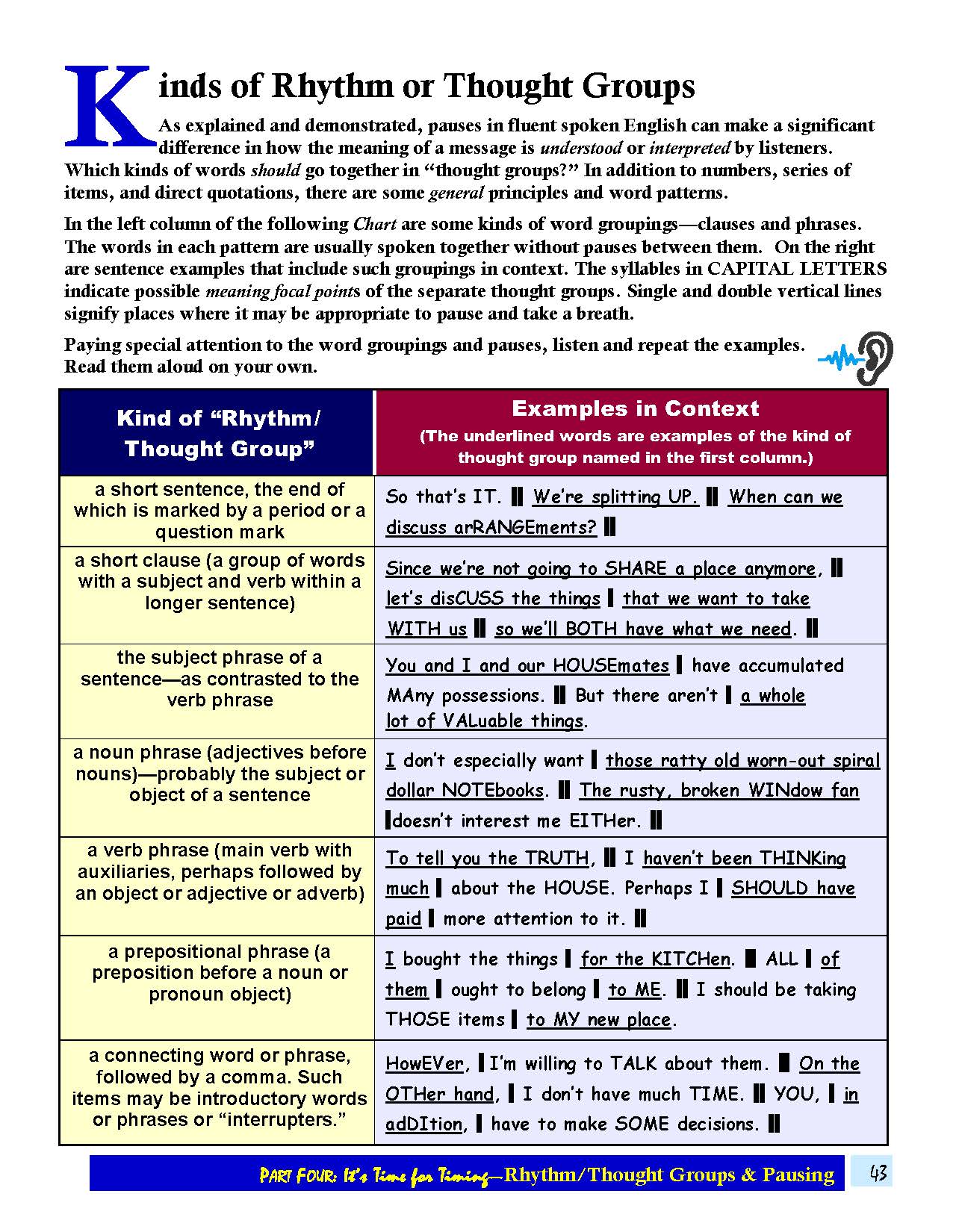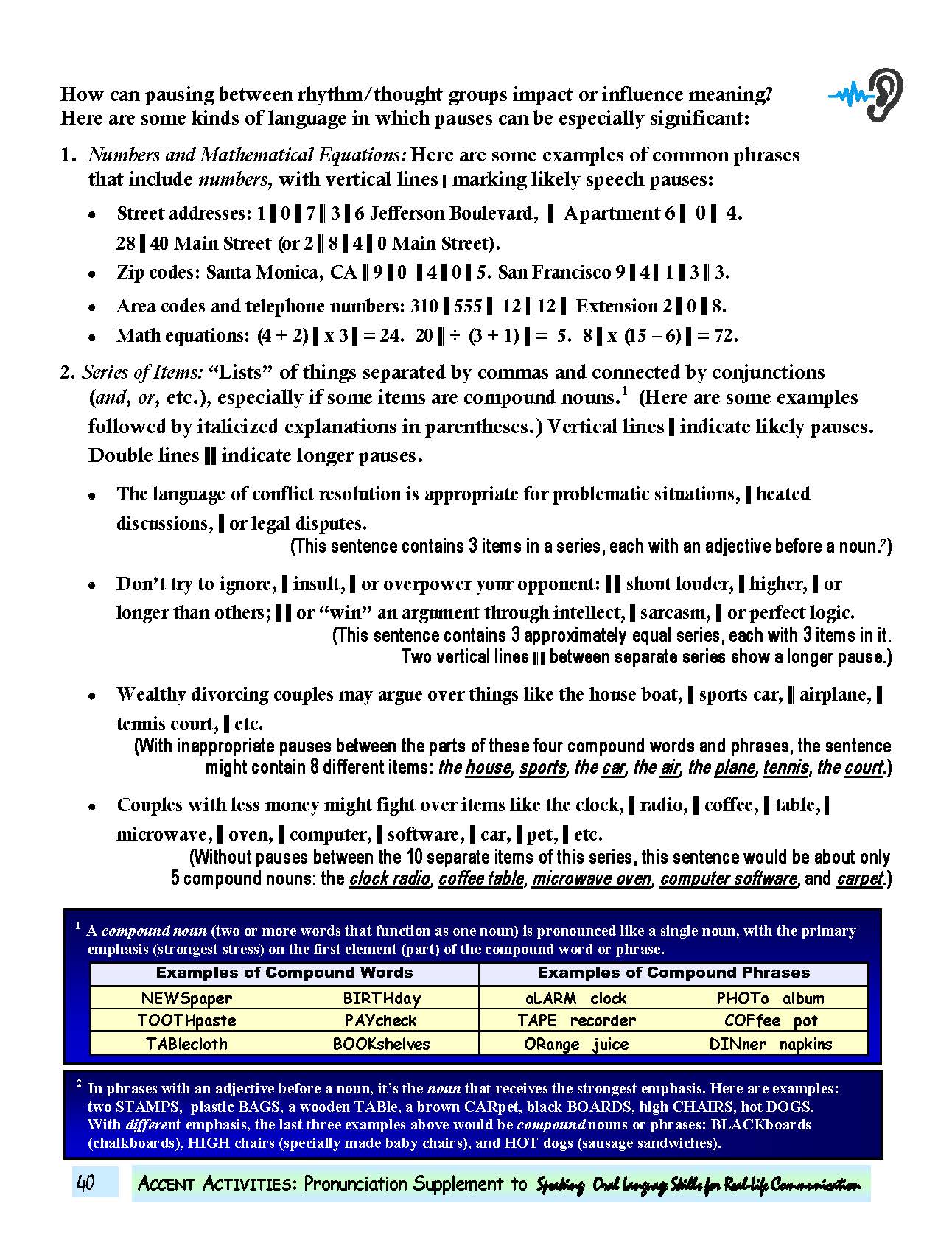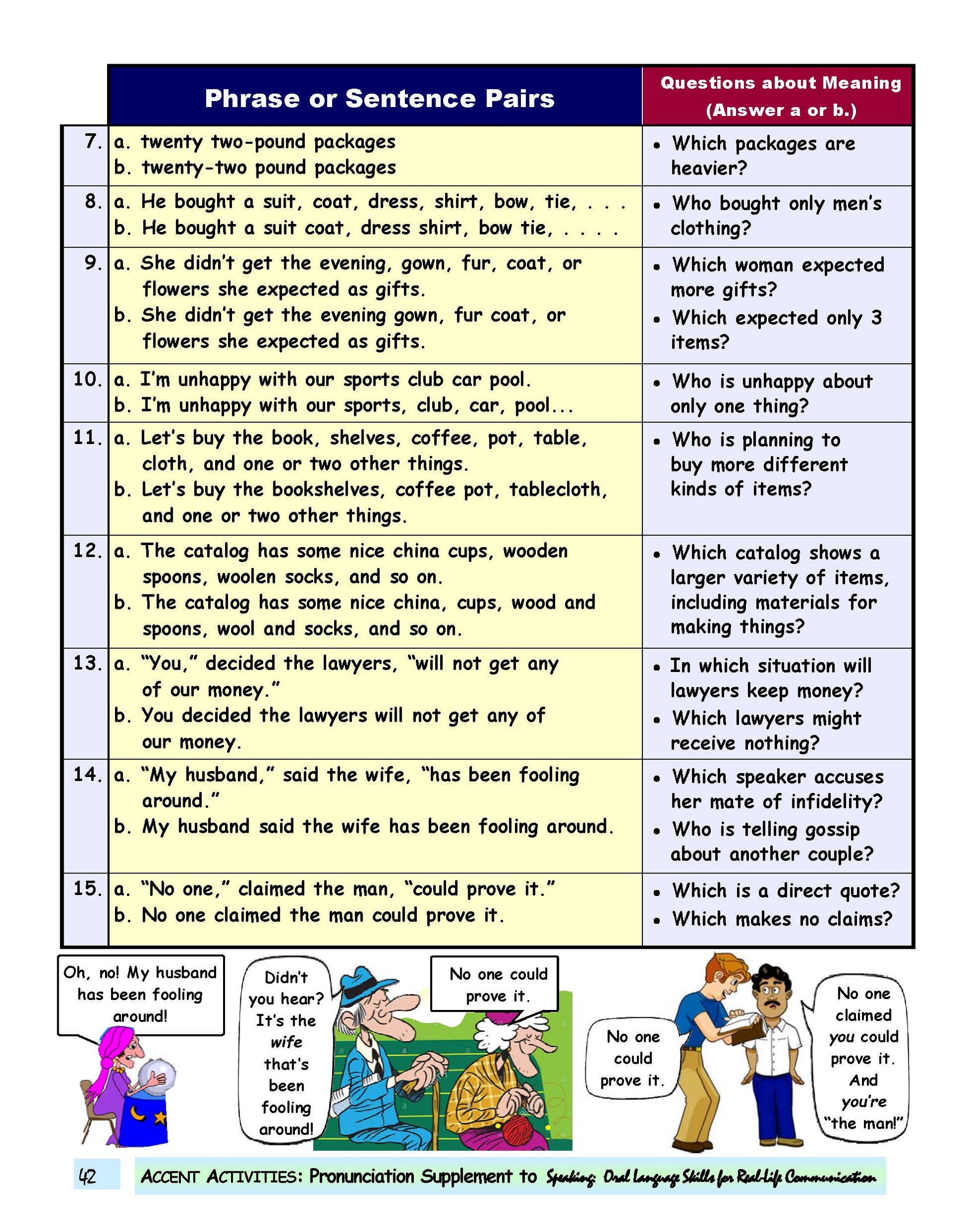Work/Life English
E-03.11 Sum Up the Accent Acquisition Principle of Rhythm with Thought Groups & Pausing
E-03.11 Sum Up the Accent Acquisition Principle of Rhythm with Thought Groups & Pausing
Accent Activities: Pronunciation Supplement to Speaking. Part Four: Rhythm / Thought Groups & Pausing, pages 39-46 (+ page 84 of Answer Key for Text Exercises)
8 + 1 = 9 pages
Who It’s For: Intermediate & Above English (as a Second Language) Teachers, Helpers, & Learners Examining “Kinds of Rhythm / Thought Groups”
Why It’s Useful: At advancing levels, speakers trying to lose a non-native accent or acquire a more recognizable (standard) American-English one, will probably want to integrate features of fluency like “Rhythm,” “Timing,” and/or “Pausing After Thought Groups.” Attention to such details reveals meaning differences that occur when one of these elements is wrongly applied. Here are explanations and exercises in “How Timing (Pausing in the Rhythm) Can Make a Difference,” followed by “Kinds of Thought Groups.” A page of answers is attached.
What You’ll Do:
[1] Begin with an often analyzed statement typical in disputes. According to which word has the focal-point emphasis, the meaning of the sentence “I didn’t say they did it” can evoke at least six different interpretations, such as “Maybe someone else said it,” “I know I never said it,” “I meant they were planning on it, but...,” “They did something else.” and so on. Observe that a Thought Group is likely to include a focal point, end in falling intonation, and/or be followed by a (short) pause. Notice how these distinctions matter in Numbers & Mathematical Equations, Series of Items, Phrases with Word Endings That Sound Like Conjunctions, & Direct Quotations. In Exercise 1, demonstrate that you can hear relevant differences.
[2] As Rhythm / Thought Groups, consider the words of short sentences or clauses; sentence subjects; noun, verb, or prepositional phrases; and/or introductory or interrupting elements. In Exercise 2, experiment with various combos of these.
[3] In Exercise 3, try Using Timing while participating in Roleplays containing “the Language of Conflict Resolution.” To practice on and go beyond, more of these situations can be found in Download E-10.10, Part Four of the Speaking text.
Couldn't load pickup availability
